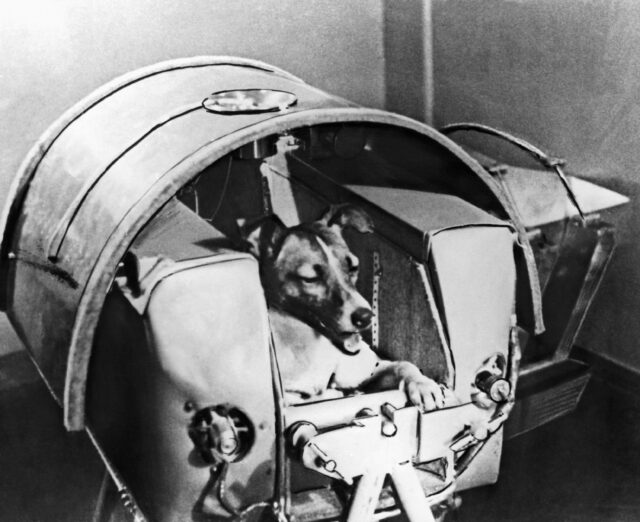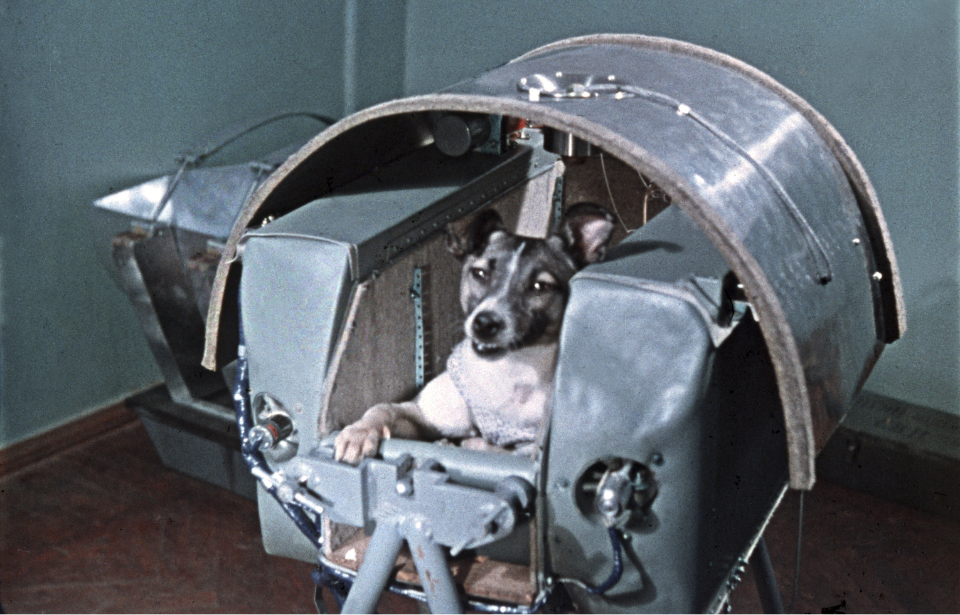On this day in 1957, the Soviet Union made history by launching Sputnik II, carrying a small dog named Laika into orbit. This event marked the first time a living creature had traveled into space, making Laika a symbol of early space exploration. Coming just one month after the successful launch of Sputnik 1, the first artificial satellite, the mission was a significant step in the space race between the United States and the Soviet Union during the Cold War.

The Sputnik II spacecraft, hastily constructed in just four weeks, weighed about 1,100 pounds and was designed to test how a living organism would survive in space. Laika, a mostly-Siberian husky, was selected from the streets of Moscow because of her calm temperament and small size. Although Sputnik 11 was equipped with oxygen and food to keep her alive, there were no plans to bring her back, as the technology for safe spacecraft recovery did not yet exist.
Laika’s journey into space was a monumental achievement, but it also had a tragic side. While early reports suggested that Laika survived for several days in orbit, it was later revealed that she likely died within a few hours due to overheating caused by a failure in the spacecraft’s temperature control system. Her mission, however, provided valuable scientific data about the effects of space travel on living organisms, helping pave the way for future human spaceflights.
Despite Laika’s untimely death, her mission was a crucial part of early space exploration. The information gathered from her flight contributed to the success of later missions, including Yuri Gagarin’s journey as the first human in space just four years later, in 1961. Laika’s sacrifice is often remembered as a key step toward achieving human space travel, though it also sparked ethical debates about the treatment of animals in space experiments.
More from us: Ham The Astrochimp Was A Hero Of The Space Race — But At What Cost?
Would you like to see more daily historical content from The Vintage News? What if we sent it directly to your inbox every day? Sign up here to receive our daily Today in History posts.
Today, Laika is remembered as one of the early pioneers of space exploration. Her story remains a reminder of both the great achievements and the moral challenges of the early space race, as humans ventured beyond Earth’s atmosphere for the first time.
